Discover Dhamek Stupa in Sarnath: History | Timings | Architecture
The Dhamek Stupa in Sarnath, Varanasi is a really cool old building that’s been fixed up six times, but it’s still not finished. The walls of the stupa have lots of amazing carvings of people and birds, and you can also see some ancient writings in a script called Brahmi. It’s like a big, fancy sculpture that tells stories from a long time ago!
The Dhamek Stupa in Sarnath is a standout monument in Sarnath, Varanasi, one of the four major places linked to Buddha’s life—along with Lumbini (where he was born), Bodhgaya (where he attained enlightenment), and Kushinagar (where he passed away). Built in 500 CE, this Stupa replaced an earlier one from 249 BCE, originally constructed by King Ashoka.
The Dhamek Stupa in Sarnath marks the deer park (Rishipattana), where Buddha gave his first sermon after enlightenment, introducing his “Eightfold Path.” With a base diameter of 28 meters and a height of 43.6 meters, it combines stone and brick. The lower section is decorated with beautiful floral carvings influenced by Gupta art.
Suggested Read: Explore the Sarnath Museum and Temples and Monastery
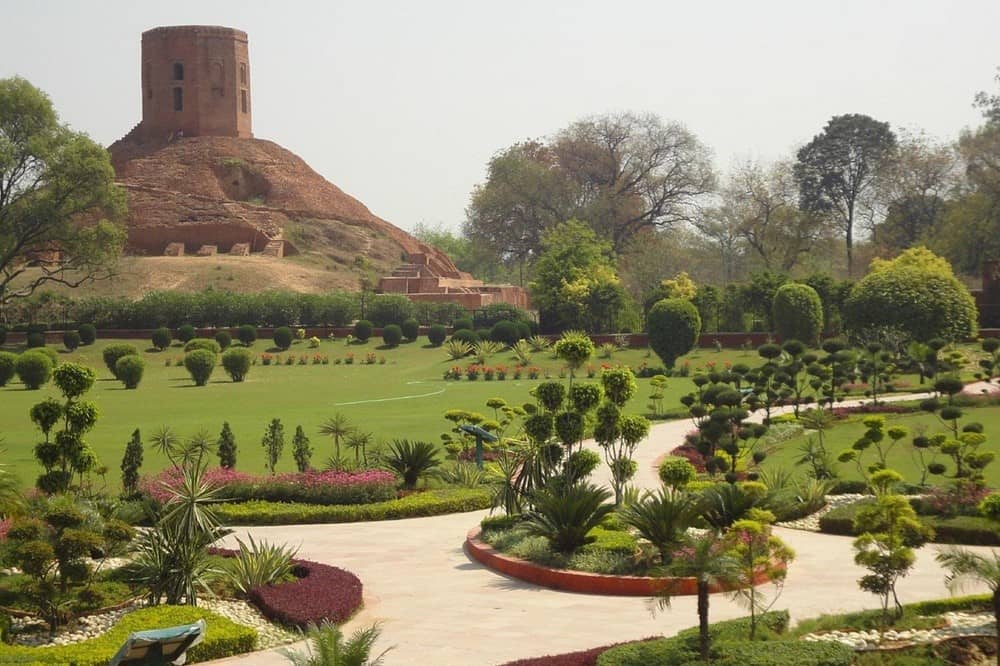
Archaeological Restoration
Dhamek Stupa in Sarnath is on the southeastern side of Sarnath, the Dhamek Stupa stands on foundations that date back through the Kushan and Mauryan periods. It is believed to have been constructed around the same time as the base of the Ashokan column. The Stupa, built during the Gupta period, is positioned on the highest point of the hidden area, with the lower dome’s stonework dating to this era.
UK-based archaeologist F.O. Oertel suggested that the Stupa’s site could be where Maitreya (the future Buddha) received a promise from Buddha. However, this claim needs further research to confirm its accuracy.
Suggested Read: Varanasi Street Food: Explore famous Street food places
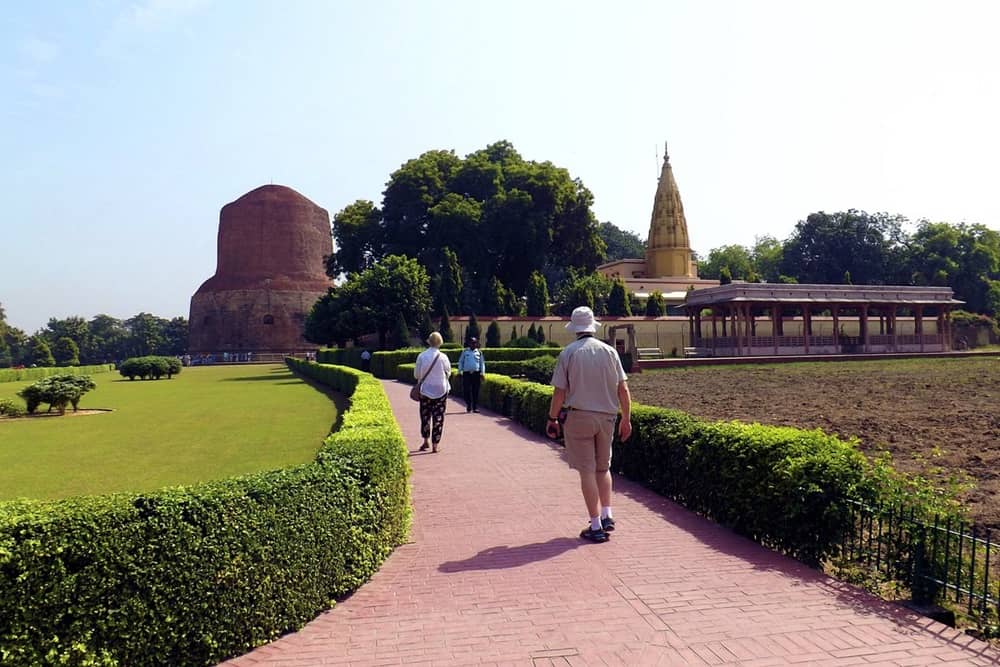
History: Dhamek Stupa in Sarnath
In the 12th century, Sarnath was reportedly destroyed by the Turks, leaving most of the site in ruins for nearly a thousand years. Despite this, the Dhamek Stupa remained relatively intact. Around 1815, organized excavations led by Col Mackenzie and later Alexander Cunningham, a notable archaeologist known for restoring major Buddhist sites in India, began to uncover the site’s treasures, including the Dhamek Stupa.
Over the years, the Stupa underwent six expansions, but the upper section remains unfinished. Its walls are adorned with intricately carved human and bird figures and feature inscriptions in the Brahmi script. Sarnath, where the Dhamek Stupa is located, has been on UNESCO’s tentative list for World Heritage status for nearly 25 years, since 1998.
Stupa Architecture
The Dhamek Stupa in Sarnath has a base diameter of 28 meters and rises to a height of 43.6 meters, constructed with both stone and brick. The lower portion is particularly noteworthy for its delicate floral carvings, reflecting Gupta artistic influences.
The Stupa has been expanded six times over the centuries, but its upper section remains unfinished. Its walls are adorned with exquisite carvings of human and bird figures and feature inscriptions in the Brahmi script.
Suggested Read: Burning Ghats in Varanasi Uttar Pradesh India

Significance of Stupa
he Dhamek Stupa holds profound significance in Buddhist history. After Lord Buddha attained enlightenment in Bodh Gaya, he delivered his first sermon to five disciples at this very spot in Sarnath, which is also known as Rishipattana, Isipatana, Mrigadava, and Migadaya. This event, known as the Dharma Chakra Pravartana or the “Turning of the Wheel of Dharma,” marks the beginning of Buddha’s teachings and is considered one of the four most sacred sites in Buddhism. The other three are Lumbini (the site of Buddha’s birth), Bodhgaya (the site of his enlightenment), and Kushinagar (the site of his nirvana).
The Dhamek Stupa in Sarnath is also historically significant as it marks the foundation of the first Sangha, or Buddhist monastic community, which included Buddha and around 60 monks. In 1798, Mr. J. Duncan reported the discovery of a stone box containing a green marble casket while dismantling the Dharmarajika Stupa. This led to further archaeological excavations, revealing a stone tablet that suggested the Stupa’s name, Dhamek Stupa in Sarnath, is a distorted form of “Dharma Chakra,” meaning “Turning the Wheel of Dharma.”
Today, Buddhist pilgrims from around the world, along with national and international dignitaries, visit the Stupa to circumambulate it and offer prayers to Lord Buddha
Dhamek Stupa Timings
The Dhamek Stupa in Sarnath is open from sunrise to sunset and remains accessible throughout the year, except on Fridays.
The entry fees for Dhamek Stupa in Sarnath are as follows:
- Indian citizens and visitors from SAARC and BIMSTEC nations: ₹20 per person
- Visitors from other countries: ₹300 per person
- Children up to 15 years of age can enter for free.

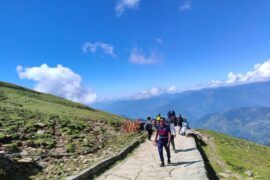
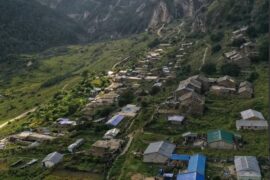
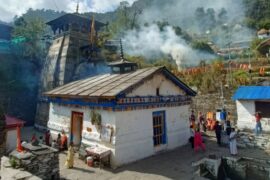
Comments are closed.